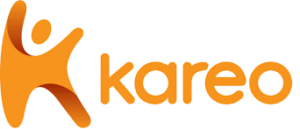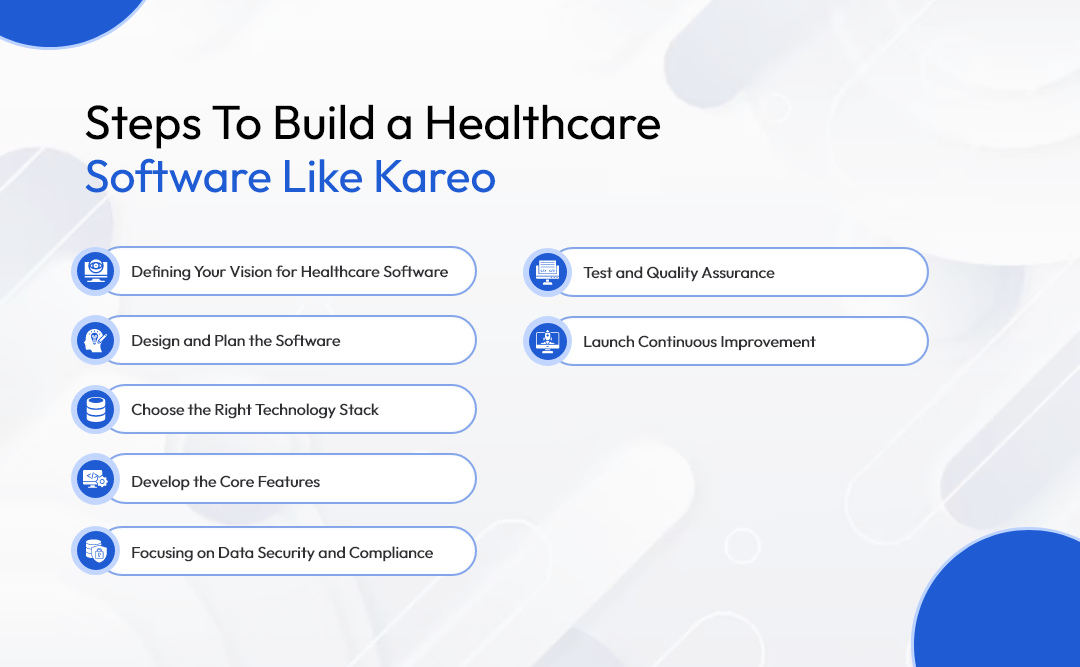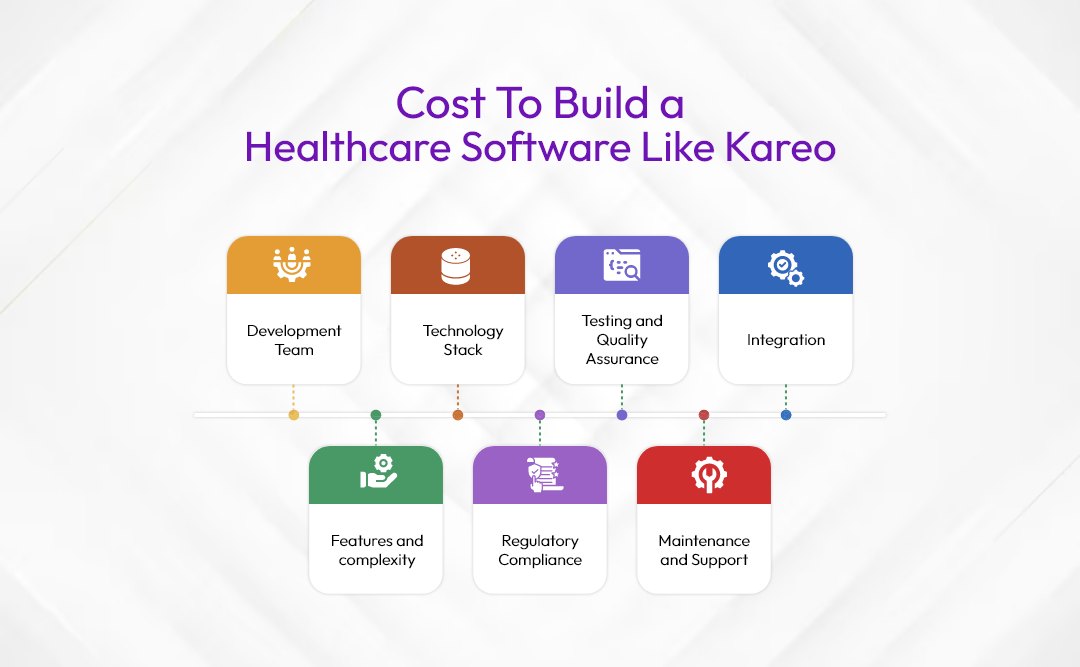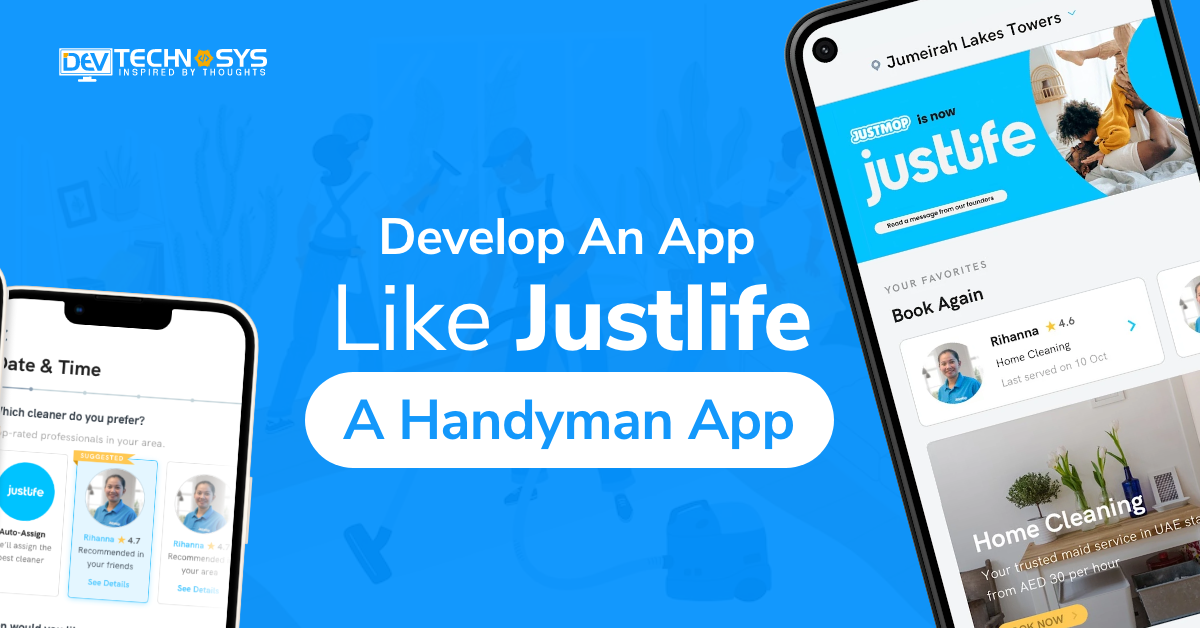Technology has transformed the healthcare landscape. Imagine a world where managing patient records, booking appointments, and billing are all seamlessly streamlined. It allows healthcare providers to focus their efforts on patient care.
Imagine a world similar to Kareo – a pioneer in healthcare software. You are poised to lead the digital revolution in the healthcare industry. You can start here if you are a healthcare professional wanting to improve your practice or a passionate entrepreneur interested in healthcare technology.
This blog will take you on an exciting journey as we dissect the complex components and strategies that go into the process to build a healthcare software like Kareo. We will delve into core functionalities, design principles, and regulatory compliance.
As we uncover the secrets to build a healthcare software like Kareo, we will revolutionize how we practice and perceive healthcare. So fasten your seatbelts and join us as we discover the secrets to creating a healthcare technology empire. Let’s start the journey of shaping the future of healthcare one digital innovation at a time.
What is Healthcare Software Kareo?

Kareo, a healthcare software platform, is designed to enhance and streamline the management of clinics and medical practices. It includes various features, such as administrative, doctor, and user panels. Kareo allows healthcare professionals to manage patient appointments, billing, insurance claims, and patient communication.
Make medical software like Kareo, as it also helps healthcare professionals comply with regulations such as HIPAA and provides tools for revenue management and analytics. Kareo’s user-friendly interface, flexibility and adaptability allow healthcare organizations to customize the software according to their needs. It is designed to improve the efficiency of medical practices, patient care, and financial performance.
Popular Healthcare Software Like Kareo
If you want to build healthcare software like Kareo, knowing about some of its competitors is crucial. In this section, we have created a table with prominent healthcare mobile app development trends in the market with a massive user base, which you must study.
| Healthcare Software | Launch Date | Ratings (Average) | Available Platforms |
| Kareo | 2004 | 4.5/5 | Web, iOS, Android |
| Athenahealth | 1997 | 4.4/5 | Web, iOS, Android |
| Practice Fusion | 2005 | 4.3/5 | Web, iOS, Android |
| AdvancedMD | 1999 | 4.3/5 | Web, iOS, Android |
| Cerner PowerChart | 1979 | 4.2/5 | Web, iOS, Android |
| eClinicalWorks | 1999 | 4.0/5 | Web, iOS, Android |
| Epic Systems | 1979 | 3.9/5 | Web, iOS, Android |
| Allscripts Healthcare | 1986 | 3.8/5 | Web, iOS, Android |
Features of Healthcare Software Kareo
If you want to build a healthcare software like Kareo that offers administrative, doctor, and user panels, then you must learn every feature of this healthcare software development solution.

1. Admin Panel:
| Feature | Description |
| User Management | Kareo software company offers this function to admin from which they can create and manage user accounts, assigning roles and permissions as needed. |
| Billing and Invoicing | Generate and manage patient billing, insurance claims, and invoices, including electronic claims. |
| Reporting and Analytics | Access various reports and analytics tools to track financial performance and practice metrics. |
| Appointment Scheduling | Schedule, reschedule, and manage patient appointments, optimizing clinic workflow. |
| Revenue Cycle Management | Streamline revenue cycle processes, from appointment scheduling to payment collection. |
| Patient Management | Maintain patient records, including demographics, medical history, and insurance information. |
| EHR Integration | Integrate with Electronic Health Records (EHR) systems for seamless patient data sharing. |
| Compliance and Security | Ensure HIPAA compliance and data security measures to protect patient information. |
| Inventory Management | Manage medical inventory, including ordering, tracking, and maintaining stock levels. |
2. User Panel
| Feature | Description |
| Appointment Booking | Users can schedule patient appointments and manage their appointment calendars. |
| Patient Information | Access patient records, medical history, and demographics, including the ability to update them. |
| Billing and Claims | Submit insurance claims and track billing and payment information. |
| Communication Tools | Communicate with patients and other staff members through secure messaging and notifications. |
| Reporting and Analytics | View reports and analytics relevant to the user’s role, such as financial or patient outcome data. |
| Prescription Management | Electronically prescribe medications and manage prescription history. |
| Telemedicine | Conduct telemedicine appointments and consultations with patients remotely. |
3. Doctor Panel:
| Feature | Description |
| Electronic Health Records | Access and update patient medical records, including diagnosis, treatment plans, and progress notes. |
| Clinical Decision Support | Receive clinical guidance and recommendations based on patient data and medical guidelines. |
| e-Prescribing | Electronically prescribe medications, check drug interactions, and access medication histories. |
| Telemedicine | Conduct telemedicine appointments, review patient history, and communicate with patients remotely. |
| Lab and Imaging Orders | Place orders for laboratory tests and medical imaging, track results, and integrate with labs. |
| Patient Communication | Communicate with patients securely, share treatment plans, and provide follow-up instructions. |
| Mobile Access | Access patient information and perform tasks on mobile devices for on-the-go healthcare. |
Steps To Build a Healthcare Software Like Kareo
Several steps must be taken to ensure the success of medical software development like Kareo in a rapidly changing industry. This guide will walk you through each stage to build a healthcare software like Kareo while highlighting the importance of every step.

Step 1: Defining Your Vision for Healthcare Software
Knowing your goals and objectives is essential before you build a healthcare software like Kareo. Start by doing thorough research on the needs and problems that the healthcare industry faces. It will help you to develop medical software. Determine who your audience is, whether it’s healthcare providers, hospitals, or medical practices. Identify the features and functions that your software will provide to meet their needs.
Step 2: Design and Plan the Software
Plan and design your software for healthcare once you’ve defined your vision. Build a healthcare software plan outlining your project’s scope, budget, and timeline. Wireframes and prototyping visualize your software’s user interface (UI/UX). To build a healthcare software like Kareo to ensure patient data’s safety and security, ensure that your design is aligned with industry standards and regulations.
Step 3: Choose the Right Technology Stack
Selecting the right technology stack is essential to build a healthcare software like Kareo. The programming languages, databases, and frameworks you choose should align with the Kareo medical software needs and scalability. Integrate robust encryption, authentication, and access control to ensure HIPAA compliance and safeguard patient data.
Step 4: Develop the Core Features
Kareo’s core features are the heart of its Kareo clinical ehr software. Modules for appointment scheduling and patient management are needed, modules to support electronic health records, medical billing, telemedicine, and electronic health records. Integrate seamlessly with standards such as HL7 or FHIR for healthcare data to ensure interoperability with other systems. Your software should simplify administrative tasks for healthcare professionals while improving patient care.
Step 5: Focusing on Data Security and Compliance
Data security and compliance are top priorities when you build a healthcare software like Kareo. Implement robust security measures such as encryption and audit trails to protect sensitive patient data. You should regularly audit your Kareo clinical software to avoid fines and legal complications to check for vulnerabilities.
Step 6: Test and Quality Assurance
Quality assurance and thorough testing are essential to the success of Kareo emr software. Test thoroughly, including integration testing, unit testing and user acceptance tests, to find and fix any bugs. Make sure that your software works smoothly on all devices and platforms. Involve healthcare professionals in the usability tests to collect valuable feedback.
Step 7: Launch Continuous Improvement
After rigorous testing and quality control, it’s time to launch your Kareo healthcare software. It is best to roll it out first to a small group of users for feedback and refinement. Monitor performance and collect user feedback to identify improvement areas. Update and improve your software continuously to keep up with changing healthcare needs, technology advancements, and regulations updates.
You must have a clear vision to build a healthcare software like Kareo. Then, you need to plan and design it meticulously. Next, you should choose the best technology stack. Finally, develop the core features. Prioritize data security and compliance. Test your healthcare software development thoroughly.
And then focus on continuous improvements after launch. Following these steps and concentrating on each one will help you build a healthcare software like Kareo that meets the needs of the industry and ensures the highest levels of security and quality.
How Much Does It Cost To Build a Healthcare Software Like Kareo?
The build of healthcare software like Kareo depends on many factors. These include the complexity of the software you are creating, the features and functionality you wish to include, your choice of technology stack, and even the location and experience level of the custom software development company. We have outlined the main cost factors and provided a table that summarizes the ranges of costs to build a healthcare software like Kareo.

1. Development Team:
Hire dedicated developers with a team of designers and project managers will take up a large portion of your budget. Developers in India and Eastern Europe are typically cheaper than those in North America and Western Europe.
2. Features and complexity:
The more functionalities and features you include, the more expensive and complex the project becomes. Features include electronic health records, patient management, billing and scheduling, and telehealth capabilities.
3. Technology Stack:
Costs to build a healthcare software like Kareo are affected by the choice of frameworks, programming languages and infrastructure. Some technologies may require licensing fees.
4. Regulatory Compliance
HIPAA, for example, is a standard and regulation that applies to healthcare software in the United States. Compliance can increase operational costs to build a healthcare software like Kareo.
5. Testing and Quality Assurance
To protect patient data and ensure the safety of patients, Kareo chiropractic software must be tested and evaluated rigorously.
6. Maintenance and Support
The initial cost to build a healthcare software like Kareo will be incurred for maintenance, updates and customer service.
7. Integration:
It can be costly and complex if you have to integrate the software into existing healthcare systems such as clinics or hospitals.
With a rough estimate, the healthcare software development cost is around $8,000 to $25,000. However, to provide you with enough understanding, we have built a table summarising the cost of a healthcare software like Kareo in this section.
| Cost Component | Estimated Range |
| Development Team | $8,000 – $25,000+ (per year) |
| Features and Complexity | $3,000 – $5,000+ |
| Technology Stack | $5,000 – $10,000+ |
| Regulatory Compliance | $3,000 – $5,000+ |
| Testing and Quality Assurance | $3,000 – $5,000+ |
| Maintenance and Support | 20%-30% of development (per year) |
| Integration | $2000 – $6,000+ |
Ensure that these are only rough estimates and that the Kareo software cost may vary greatly depending on your requirements and circumstances. To get an accurate estimate of the build a healthcare software like Kareo, consulting with software experts and conducting a thorough project assessment is essential.
Last Thoughts!
Developing kareo health software requires careful planning, an experienced development team, and a substantial budget. The regulatory compliance, the feature set, the technology stack, and ongoing maintenance are all critical considerations.
Costs to build healthcare software like Kareo can vary greatly, but a rough estimate of such a project is between hundreds of thousands and millions of dollars. Throughout the entire development process, prioritizing patient data security and regulatory compliance is essential. A clear vision, commitment to patient care, and quality are necessary for building successful healthcare software solutions.
FAQs
1. What Are The Main Features Of Healthcare Software Such As Kareo?
The key features are patient management, scheduling and billing, electronic health records, and telehealth capabilities.
2. How Can I Ensure Healthcare Regulations Such As HIPAA Are Adhered To?
Hire legal experts to build robust security measures and ensure regulatory compliance.
3. What Is The Best Technology Stack For Developing Healthcare Software?
Choose your stack according to the requirements of your project. Common choices include Java or Python and cloud-based services like AWS, Azure, etc.
4. How Do I Budget For Maintenance And Support?
To know how much Kareo billing software costs, it is crucial to budget annual maintenance contracts for your development team and invest in timely updates and customer support.
5. What Is The Timeframe For Developing A Software System In Healthcare Like Kareo?
Depending on the complexity and size of your healthcare software developers, development timelines can vary from one to three years. Plan and be ready for continuous improvements.




















